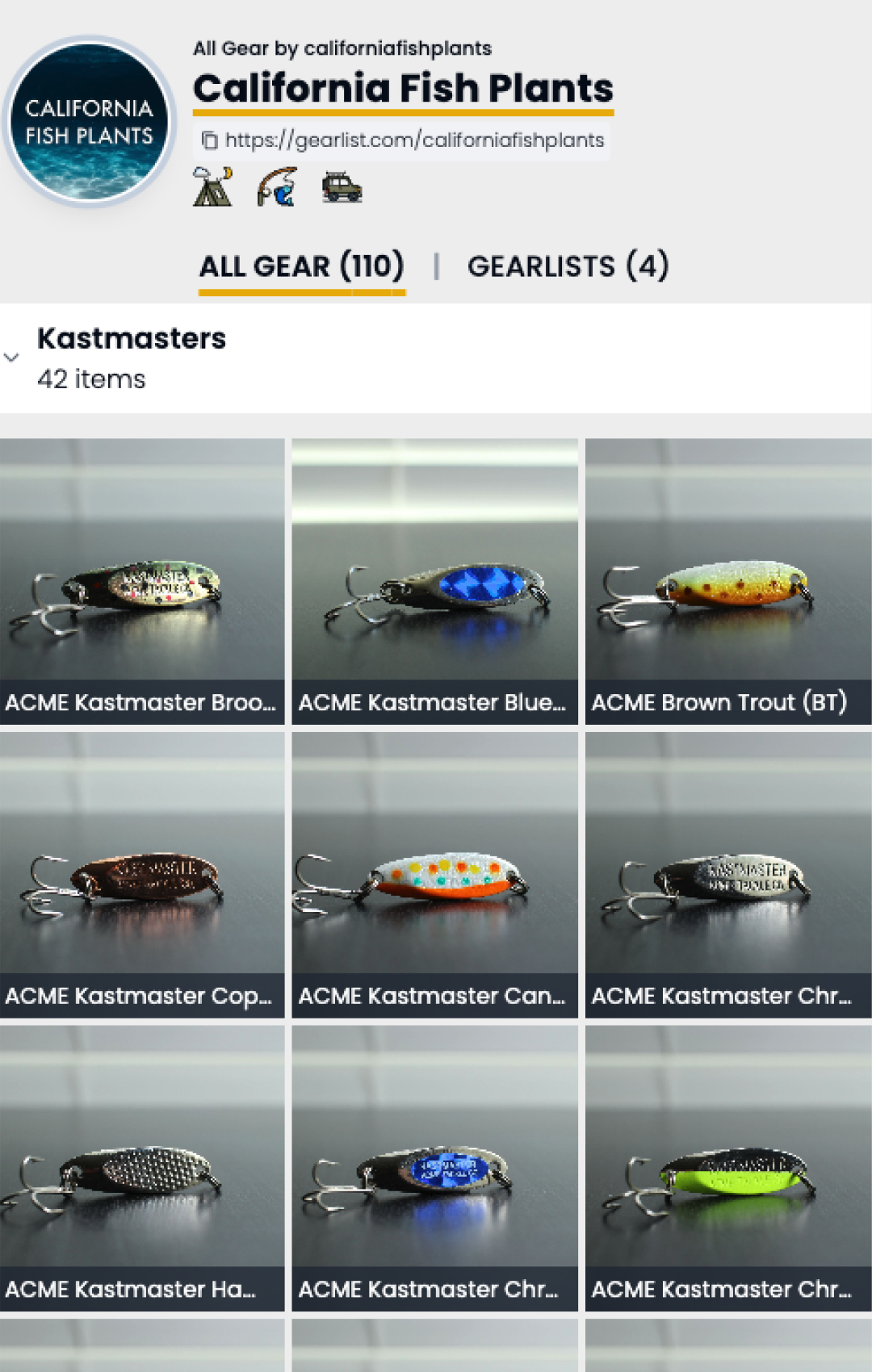Nestled within the remote Pine Mountain area of the expansive Los Padres National Forest, Reyes Creek stands as a hidden gem for fly fishing enthusiasts. This comprehensive guide provides insight into the types of fish awaiting anglers, the history of the creek, and valuable tips and recommendations to optimize your fly fishing experience in this pristine wilderness.
📈 Latest Fish Plants
Fish here often?
How To Read Fish Plant Graphs
To interpret fish plant graphs effectively, consider the following key elements:
- Blue Vertical Bars and Numbers:
- Representation: The blue vertical bars on the graph represent individual fish plants.
- Weight Measurement: The associated numbers indicate the total weight of the plants in pounds (lbs.) that occurred during a specific week.
- Significance: Monitoring these bars helps identify weeks with higher planting activity, aiding anglers in selecting optimal times for fishing near recent plantings.
- Orange Trend Line:
- Purpose: The orange trend line represents the moving average of all fish plant activities at the specified location.
- Indicator of Activity: A rising trend line suggests a consistent increase in planting activity over the designated period. This indicates the potential for more catch opportunities and signifies a growing fish population over the weeks.
- Interpreting the Moving Average:
- Upward Trend: A rising moving average implies an upward trajectory in planting activity, indicating an increasing number of fish being introduced into the area. This suggests a positive outlook for anglers, as it implies a larger and potentially more accessible fish population.
- Downward Trend (Not Specified): The description does not provide information on the interpretation of a decreasing trend in the moving average. It might be beneficial to include information on what a decreasing trend could signify in terms of fishing prospects.
- No Data Present:
- Possible Explanations: If no data is visible on the graph, it may indicate that the location had no fish plants in the last three months. Alternatively, the absence of data could be due to non-disclosure of fish plants for that location.
- Natural Population: Some fishing areas in California rely on the natural growth of fish populations, and graphs may not show plants if this is the case.
- Graph Disclaimer:
- Data Source: The graphs reflect a combination of publicly disclosed data and estimates. Some locations may disclose fish plants without specifying exact amounts.
- Not Universal: Not all fishing areas have fish plants, and the natural growth of fish populations plays a significant role in many California fishing locations.
Understanding these elements will empower anglers to make informed decisions about when and where to fish based on historical fish plant data.
Note: If no data is present in the graph above, this location may not have had any plants the last 3 months, or may not have publicly disclosed plants. Graphs reflect both publicly disclosed data and estimates, as some locations disclose plants, but not exact amount.
🗺️ Map & Fishing Location
Types of Fish You Can Expect to Catch Here:
- Rainbow Trout:
- Averaging 8-12 inches, with the potential for larger fish in deeper pools.
- Rainbow trout thrive in the cool, shaded sections of the creek.
History of the Place:
Reyes Creek, a small but enchanting trout stream, is tucked away in the Pine Mountain area of Los Padres National Forest. Although it receives minimal attention, the creek is stocked with small rainbow trout in the 10- to 12-inch class, offering a tranquil weekend adventure for those in the know. The stream may dwindle to a trickle in the summer and fall, making spring and early summer the ideal times for a fishing expedition. The area boasts several trails for side trips, and nearby alternatives like Sespe Creek and the North Fork Ventura River provide additional options for anglers.
The Department of Fish and Game (DFG) mandates the use of artificials with barbless hooks, and there is a two-fish limit for landlocked steelhead. The campground offers pit toilets and a horse corral, though drinking water is not available. Garbage must be packed out, and a daily fee per parked vehicle is required.
Top 5 Tips for Anglers Fishing Here the First Time:
- Plan your trip for spring or early summer to avoid low water levels.
- Use smaller tippet sizes (4-6) for stealthy presentations.
- Opt for morning fishing when the water is cooler.
- Prepare for moderate to strenuous hikes to access the best fishing spots.
- Explore less-frequented areas away from the campground for untouched stretches of the creek.
Top 5 Strategies and Tactics for Optimal Fly Fishing:
- Go early to capitalize on the morning bite.
- Match the hatch with stoneflies, caddis, and mayflies.
- Wear proper footwear for moderate to strenuous hikes.
- Explore secluded stretches of the creek for a more intimate experience.
- Practice catch and release to ensure a healthy trout population.
Top 5 Recommendations for Fly Fishing Gear:
- Fly Rod: 3-5 weight fly rod for delicate presentations.
- Reel: Lightweight reel with a smooth drag system.
- Fly Line: Floating weight-forward line for versatility.
- Flies: Adams, Parachute Adams, and Elk Hair Caddis for matching the hatch.
- Clothing: Lightweight, breathable clothing and proper footwear for hiking.
Explore Our Gearlist: For exact gear recommendations tailored to Reyes Creek, visit our Gearlist to optimize your fly fishing experience.
Reyes Creek offers fly fishing enthusiasts a unique opportunity to immerse themselves in a pristine wilderness setting. With eager rainbow trout, breathtaking scenery, and a sense of secluded beauty, Reyes Creek stands as an angler’s paradise. Remember to obtain a valid California fishing license, respect the wilderness by leaving no trace, and adhere to all posted regulations. Prepare for a memorable fly fishing adventure in the heart of Los Padres National Forest. Tight lines await you in the tranquil waters of Reyes Creek!



